Ladybugs are some of the most beloved creatures in the garden. They’re small, cute, and their presence usually means that the garden is healthy. But are ladybugs good for the garden? What do they eat? How can you attract ladybugs to your garden?
In this guide, we will answer all of your questions about ladybugs and provide some tips on how to make them feel at home in your garden!
Ladybug Life Cycle
The lifespan of a ladybug depends on the species, but most ladybugs live for about one year. The adult ladybug will mate and lay eggs in the springtime. Once the eggs hatch, the larvae will go through several growth stages called instars. After the final instar, the larvae will pupate into adults.
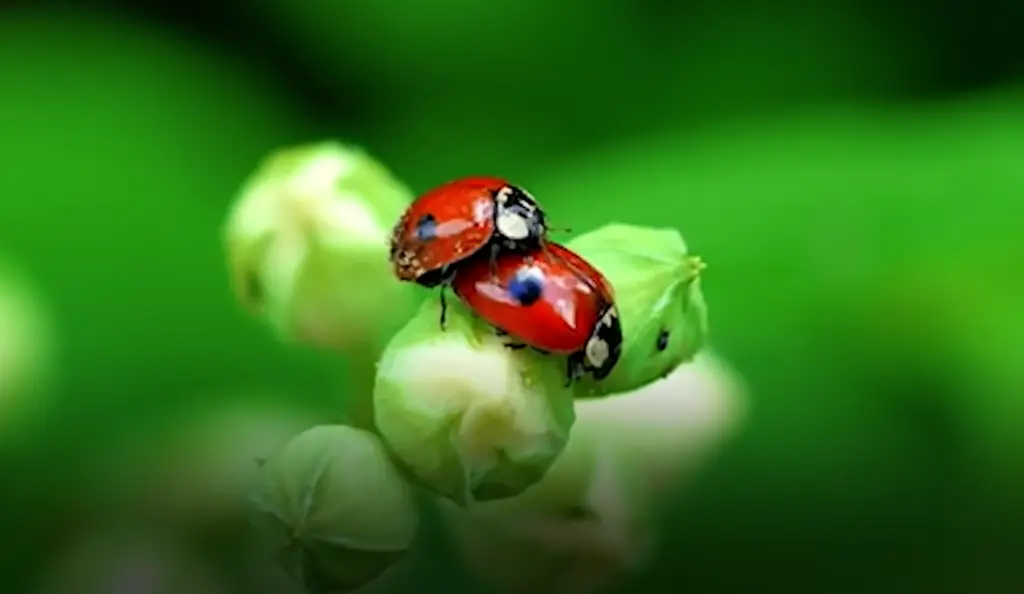
Most ladybugs overwinter as adults. They will find a protected place to spend the winter months, such as under leaves or in cracks in trees. In the spring, they will emerge and begin the cycle again.
Some ladybugs, like the Asian multicoloured lady beetle, can live for up to three years. [1]
Are Ladybugs Good for the Garden?
Yes, ladybugs are good for the garden! Ladybugs are beneficial insects that eat pests. They help to control the population of aphids, mites and whiteflies by eating them! Lady bug populations should be increased in your garden because they make it safer for you plants as well.
There are a few things to keep in mind when using ladybugs in the garden.
- First, ladybugs are attracted to certain plants. These plants include Dill, Fennel, Cilantro, and Parsley. Planting these herbs will help to attract ladybugs to your garden. Additionally, you can buy ladybugs from a store or online if you don’t have any in your garden already.
- Second, it’s important to release the ladybugs into the garden during the night. This is because ladybugs are nocturnal creatures and are more active at night.
- Third, you need to provide a source of water for the ladybugs. Ladybugs will drink from any small puddles or drip lines that you have in your garden.
By following these simple tips, you can ensure that ladybugs will be a welcome addition to your garden.
They will help to keep the population of harmful pests down, and this will help your garden stay healthy. [1]Types of Ladybugs
Good
Lady bugs are predators that can eat any type of pest damage to plants. The two-spot or Asian lady beetle is known for eating aphids and other insects.
Farmers often release these beetles into their crops so they’ll control the population there too.Ladybugs are important for pollination. They help transfer pollen from one flower to another, which helps plants grow and produce food. This is especially important for crops.
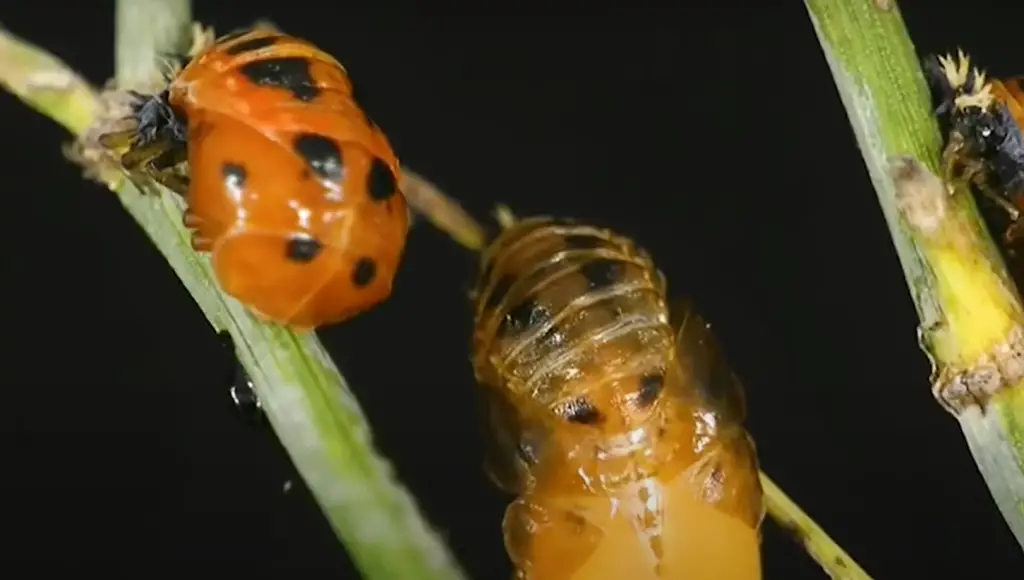
Ladybugs are important predators of scale insects, which can cause serious damage to plants. Scale is often found on leaves of plants. Lady bug eggs will develop into larvae that eat the sap of the plant. The larvae will then turn into adult ladybugs that look for new prey.
Bad
There are a few different types of ladybugs, and not all of them are good for your garden. Some ladybugs can be harmful to your plants. The most common type of bad ladybug is the Asian Lady Beetle.
Asian Lady Beetles were actually introduced to North America to control aphids and other pests. However, they soon became a problem themselves because they eat just about anything, including other ladybugs. If you have an infestation of Asian Lady Beetles, the best thing to do is contact a pest control company.
Bright
These little creatures are not only beautiful to look at, but they can also be beneficial to your plants.
Ladybugs may be lucky for you, too! In many cultures around the world it’s believed that seeing a ladybug means good fortune. Farmers have used ladybugs for a long time to protect their gardens and fields from pests.
Ladybugs love to eat things that are smaller than them, including other bugs like mosquitoes or aphids. If you see ladybugs near your home, don’t worry. They are there to help protect you. [3]
The Brighter the Ladybug, the More Toxic It Is
Ladybugs are often toxic because their colours warn predators that they’re not ready to eat. The more vibrant the hue, the greater amount of toxins in its body will be. Orange and red ladybugs have enough venomous power to kill even small animals!
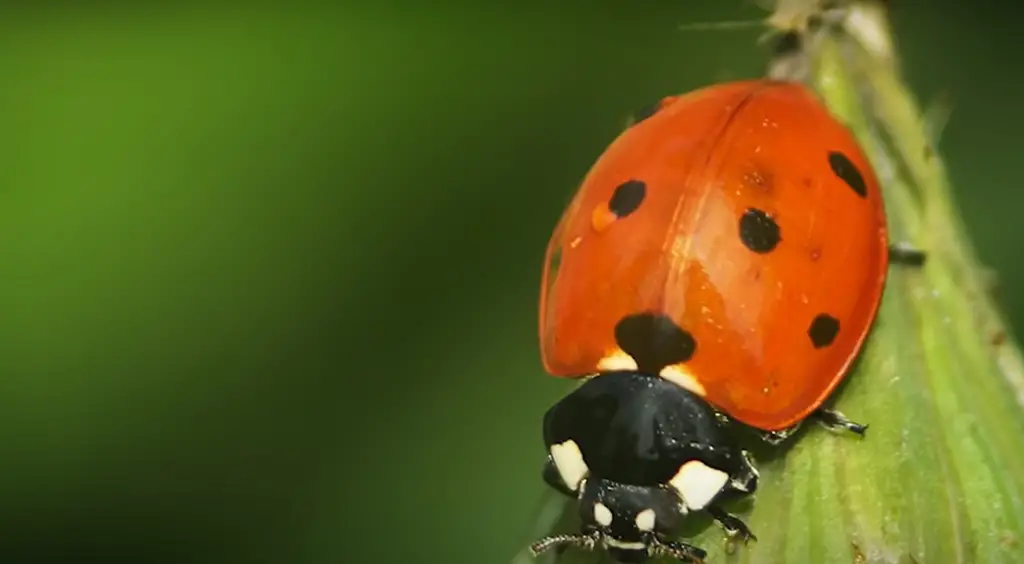
Lady bugs are beneficial because they eat aphids, which can cause damage to plants. Their mouthparts have a chemical that is painful. This chemical helps the insect’s body release hormones so their wings will stay closed while helping protect them from predators like birds and spiders!
To get rid of ladybugs, you can vacuum up the pesky bugs and release them outside in a safe place. If you can’t get rid of the pests using poison, then try traps. Traps won’t kill you or any other living creatures.
Are Ladybugs Ever Harmful?
Lady bugs are beneficial to gardens and crops because they eat pest aphids. They are helpful because they eat small insects that damage plants. If you see one in your garden, don’t be afraid! These helpful bugs will stay around for as long as it takes until everyone gets used to their new environment again.
However, releasing them into the wild is not recommended because they may not survive. If you must get rid of them, put them in a jar and then let them go outside far away from your home. You can also put them in the freezer for a few days to kill them.Still, it’s important to be careful when handling ladybugs. Like all insects, they can bite if they feel threatened. But their bites are not harmful to humans and animals. So feel free to enjoy these beautiful creatures in your garden! Just be sure to give them a gentle touch. [3]
How to Prevent and Deal With Infestations?
Preventing and dealing with ladybug infestations can be difficult. The best way to prevent them is to keep your garden clean and free of debris. Remove any potential food sources, such as aphids, from your plants. You can also try using traps or pesticides specifically designed to target ladybugs.
If you already have an infestation, you’ll need to take a more aggressive approach. You can try vacuuming them up or using a strong stream of water to knock them off of your plants. You can also use pesticides, but be careful not to harm beneficial insects like bees.
How to Attract Ladybugs to the Garden?
Ladybugs are especially attracted to members of the daisy family, such as coneflowers, cosmos, and marigolds. They also like yarrow, dill, fennel, and cilantro. You can also try planting a ladybug house in your garden. These houses provide a safe place for ladybugs to overwinter.
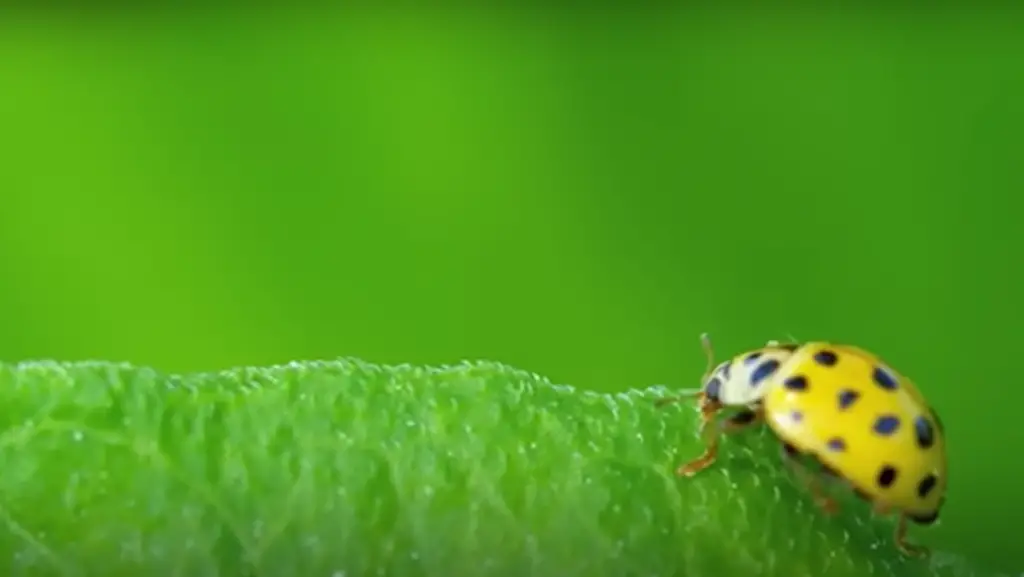
To make your own ladybug house, you will need:
- A small box or container with a lid
- Straws or small twigs
- A drill
- Scissors
Start by drilling holes into the sides of your box or container.
Then, fill the box with straws or small twigs. Cut a hole in the lid of the box, and place it on top.Once you have your ladybug house set up, sit back and enjoy watching these helpful insects at work in your garden!
Tips for Keeping Ladybugs in the Garden
If you’re interested in keeping ladybugs around to help with your garden, there are a few things you can do.
- One way to attract ladybugs to your yard is by planting plants that they like to eat, such as dandelions, daisies, and clover.
- Aphids and other small insects are also a favourite food of ladybugs, so this will help increase their population in your yard.
- You can also buy ladybugs from a gardening store. However, they may not stay for long if there are not enough food sources.
- You don’t want to use pesticides in your garden because they will kill the good and bad insects. If you have a serious pest problem, try using an insecticidal soap. [2]
FAQ
What Insects Do Ladybugs Kill?
Ladybugs are predators and will eat a variety of soft-bodied insects including: aphids, whiteflies, mites, mealybugs, small caterpillars, and other small beetle larvae. One ladybug can consume as many as 50 aphids per day! They are most active in the spring and fall when temperatures are moderate and their insect prey is most plentiful.
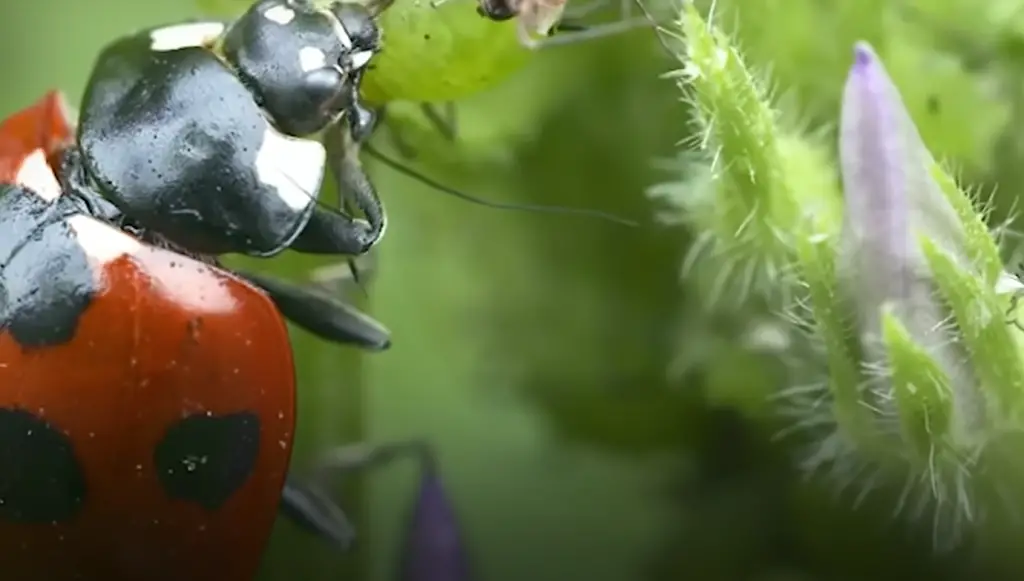
Insects are not the only thing on the menu for these voracious eaters; ladybugs will also drink nectar and honeydew (a sticky, sugary substance secreted by aphids). This makes them important pollinators as well.
Do Ladybugs Bite?
In general, ladybugs do not bite. They are actually quite harmless to humans. However, they can pinch with their claws if they feel threatened.
One common misconception is that ladybugs can fly. In fact, most species of ladybugs cannot fly very well at all.
Are Ladybugs Pests?
No, ladybugs are not typically considered pests. In fact, many gardeners encourage ladybugs because they prey on common garden pests, such as aphids.
Ladybugs are a great way to get rid of pesky aphids. Just release some into your garden and they’ll do all the work for you!
You might think that ladybugs are monsters with a taste for your plants, but don’t worry – there can be exceptions. If you have an infestation of bugs and they start nibbling on some flowers or leaves, then it is time to take action!
Lady bugs are gentle creatures that only want to eat the aphids on your plants. They won’t bother anything else!
If you have a pest problem, ladybugs could be the solution! Just make sure to release them early in the season so they can reproduce and build up their population. Otherwise, you might need to supplement with more ladybugs next year.
What is Bad About Ladybugs?
There are a few things that can be considered bad about ladybugs. For one, they can pinch if they feel threatened. Additionally, some ladybug species are known to feast on plants – which isn’t ideal if you’re trying to maintain a garden! However, the vast majority of ladybugs are harmless and actually quite beneficial for gardens.
Another potential downside of ladybugs is that they can be quite messy. If you have a lot of them in your garden, you may find their shed exoskeletons and other waste products around. This isn’t harmful to plants or people, but it can be unsightly.
Overall, there aren’t many negative aspects to having ladybugs in your garden. They’re mostly beneficial and can help keep pesky pests like aphids under control. As long as you don’t mind a little bit of extra cleanup, ladybugs make great gardening companions!
Do Ladybugs Eat Plants?
Yes, ladybugs do eat plants–but only specific kinds of plants. Lady bugs are actually helpful to have around the garden because they eat aphids and other small insects that can damage your plants. So while you may see a few bites taken out of leaves here or there, overall having ladybugs in your yard is good for all sorts!
If you’re noticing more damage to your plants than usual, it might be because there are too many ladybugs in your garden. While they are helpful in controlling pests, a large population of ladybugs can do some serious damage to your plants.
If you think you have too many ladybugs, try releasing them into the wild or contact a pest control professional to help get their population under control.
Will Ladybugs Eat My Vegetables?
No, ladybugs won’t eat your vegetables. However, their larvae might. If you have a lot of ladybugs in your garden, it’s a good idea to check your plants for larvae periodically and remove them if necessary.
Larvae are small, black, and look like miniature alligators. They’re voracious eaters and can do a lot of damage to your plants if left unchecked. If you find them on your plants, you can remove them by hand or use an insecticide.
Are Ladybugs good for tomato plants?
Yes, ladybugs are good for tomato plants! They will help to keep aphids and other pests under control, which will in turn help your plants to stay healthy and productive. Here are a few tips to attract ladybugs to your garden:
- Plant some of their favourite foods: dandelions, fennel, cilantro, and yarrow are all good options.
- Avoid using pesticides or other chemicals in your garden, as this can kill ladybugs (and other beneficial insects).
- Provide shelter for them by creating a habitat with rocks, branches, and leaves.
- Make sure there is a water source nearby so they can stay hydrated.
If you follow these tips, you should have no trouble attracting ladybugs to your garden! And once they’re there, they’ll help keep your plants healthy and happy.
Useful Video: Adding Ladybugs to the Garden
Conclusion
Ladybugs are beneficial for gardens because they feed on aphids and other pests. They also help to pollinate plants. If you’re having trouble with pests in your garden, consider adding ladybugs as a natural form of pest control. Ladybugs can be purchased at most nurseries or garden stores.
Be sure to release them into your garden in the early evening so they have time to find a good hiding spot before morning. With a little patience, you should soon see an improvement in your pest problem.
Do you have any tips for using ladybugs in the garden? Share them with us in the comments below! And be sure to check out our other gardening guides for more helpful tips. Happy gardening!
References:
- https://www.hgtv.com/outdoors/gardens/animals-and-wildlife/are-ladybugs-good-garden
- https://www.gardeningknowhow.com/garden-how-to/beneficial/attract-ladybugs.htm
- https://dengarden.com/gardening/Ladybugs-They-Can-Keep-Your-Flowers-and-Plants-Pest-Free










Leave a Reply
View Comments